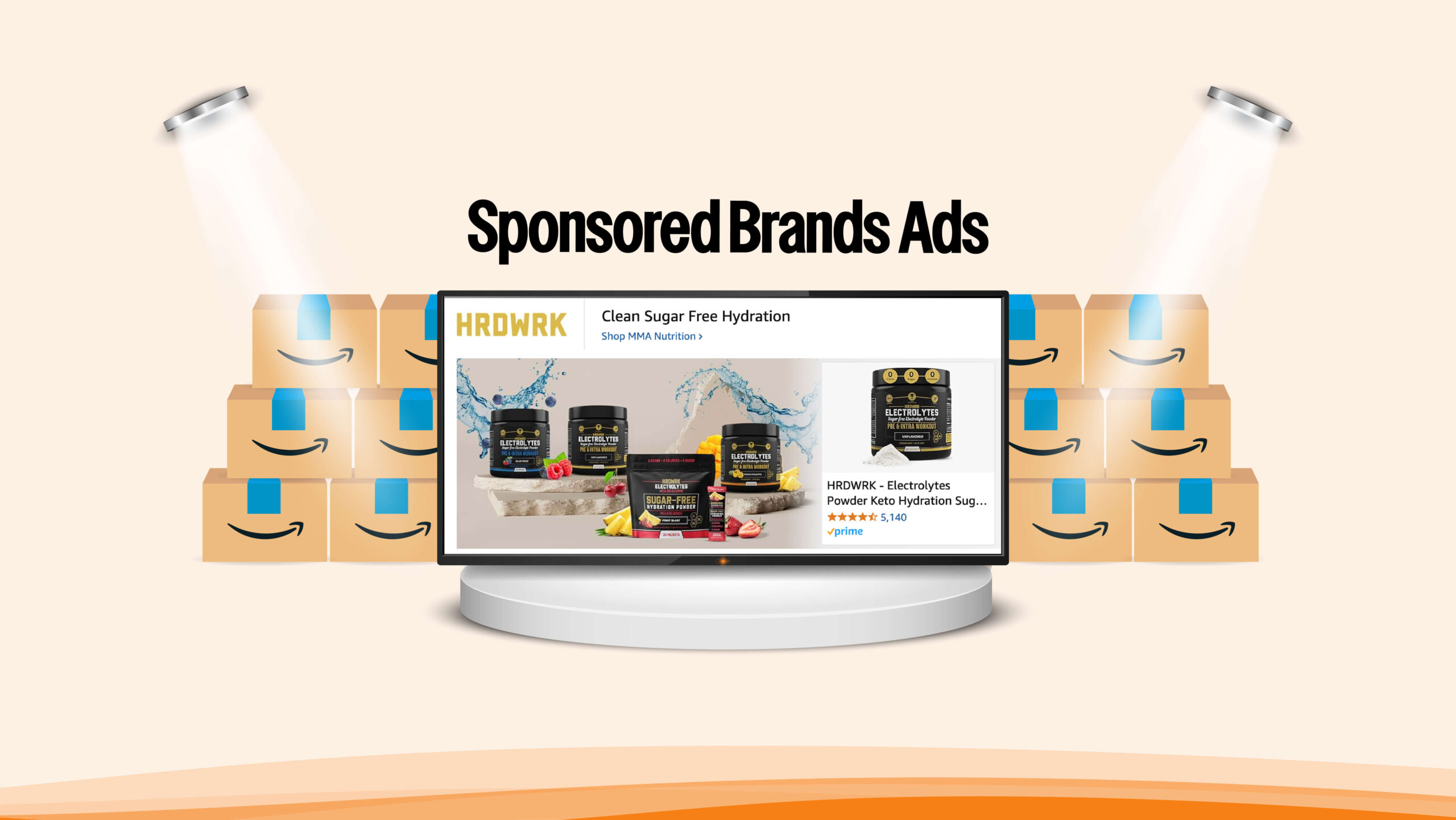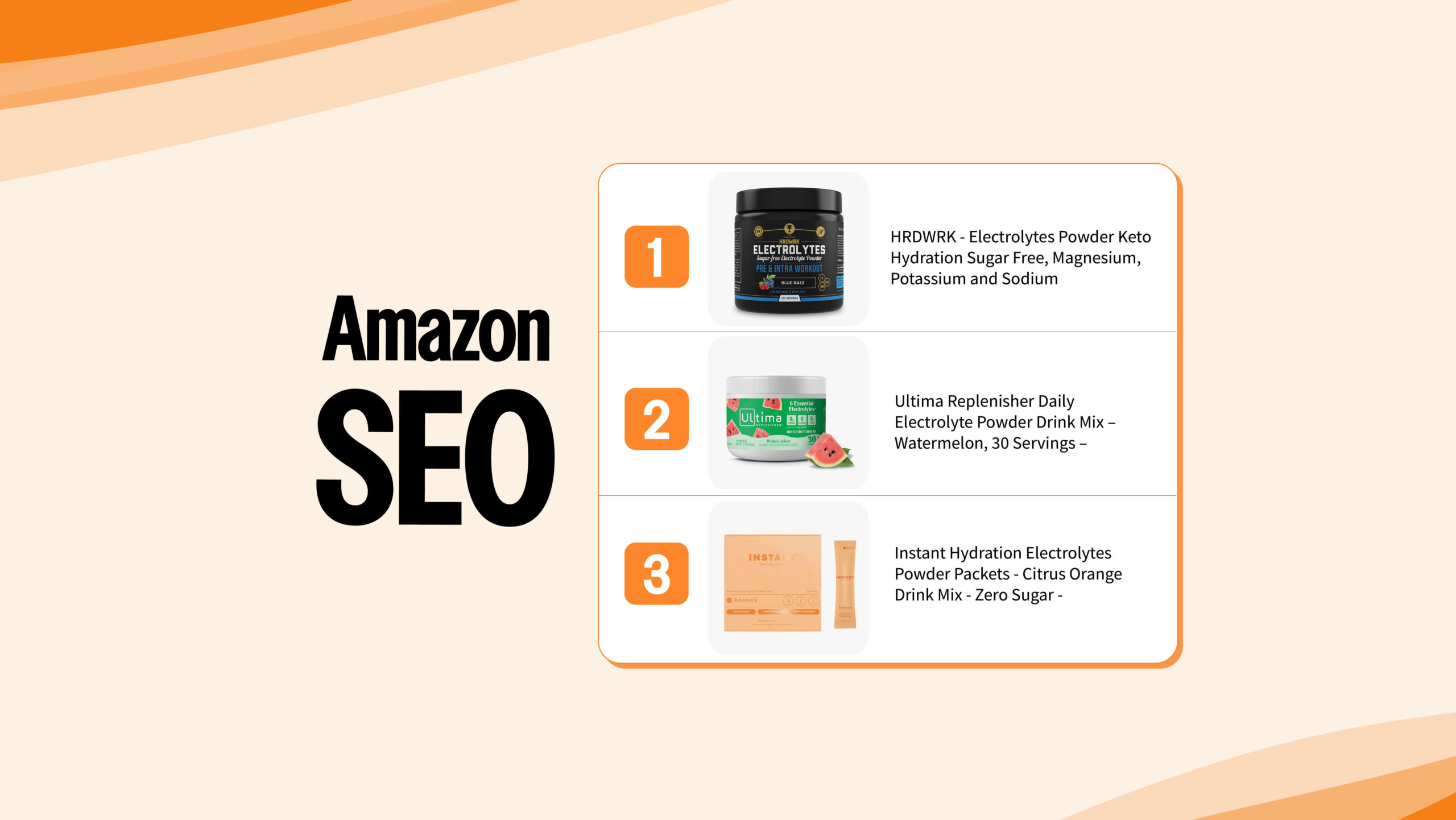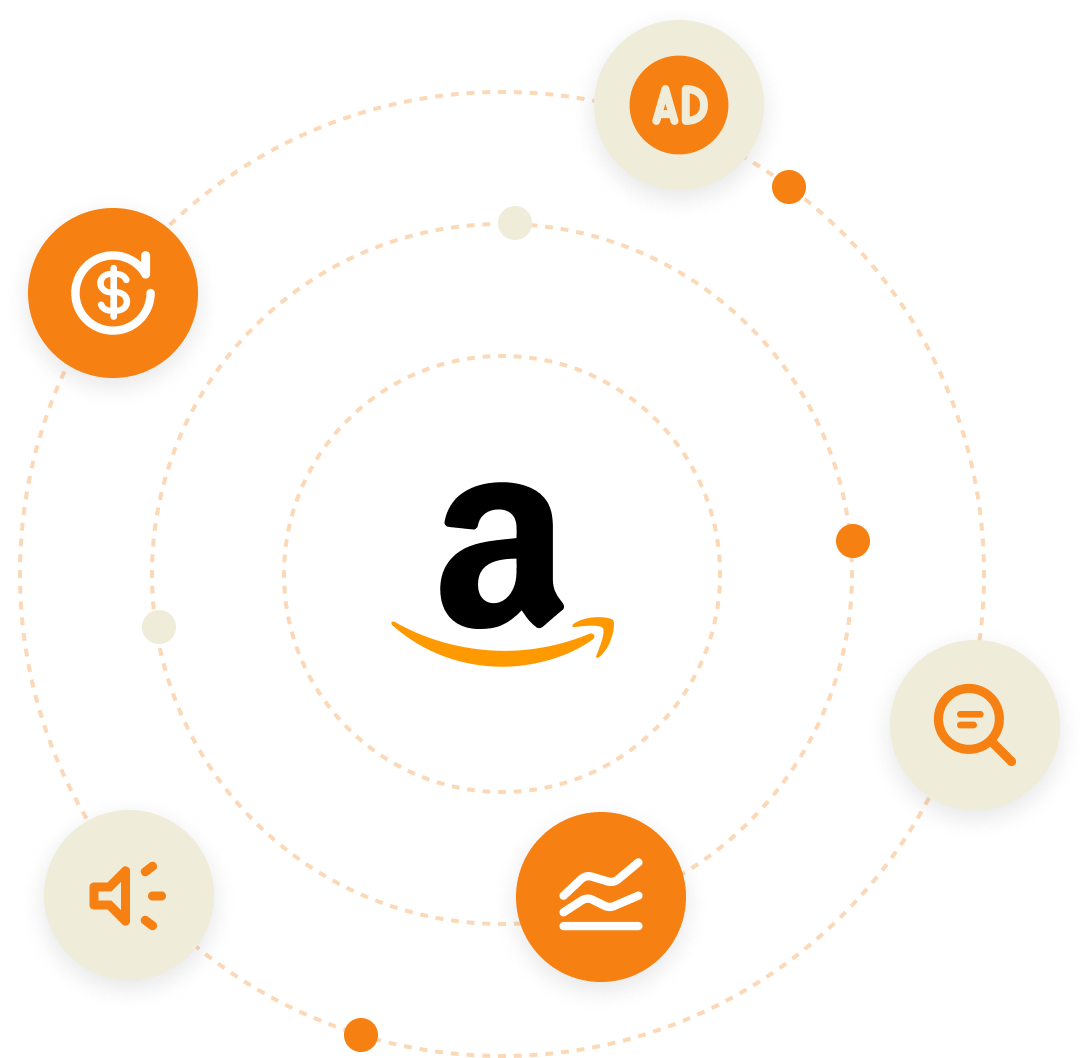With more than 80% of sales on Amazon taking place on the first page, it is more important than ever to rank high in search results. Amazon works with its own proprietary search algorithm to determine which products are placed at the top of search results, and with an emphasis on the consumer, Amazon will always promote the products that receive more clicks that are most likely to convert.
Click through rate (CTR) and conversion rate (CVR) both influence where a product listing is placed in search results as well as impacting total revenue and profitability. CTR is a measure of the amount of traffic to your listing and CVR is a measure of the volume of traffic that converts to a sale. In this regard, both are equally necessary to be successful on Amazon and when analyzed in conjunction, you can identify where there may be areas of concern.
While paid advertising is relevant and requires a more strategic approach to impact CTR and CVR, it is not the sole driving force of visibility. Therefore, it is crucial to understand the factors influencing both metrics to maximize sales and profitability.
Click Through Rate (CTR)
Based on customer search terms, the product listings, which appear in the search results, is a buyer first insight into the available products for their query. It is also where they make their initial disqualifications of product listings which do not appeal to them. This is the reason first impressions are key to winning a purchase over your competitors. Constantly monitoring and taking actionable steps to increase your CTR can positively impact your revenue and your bottom line.
What is CTR?
CTR is the ratio of clicks on a product listing to the number of times the listing appeared (i.e. the number of impressions). Here is a simple click through rate calculation:

Why is CTR an Important Metric?
CTR is a key indicator as to how relevant and how appealing your product listing is to shoppers. A high CTR means your listing is both relevant and convincing and a shopper is enticed to click and see more. A low CTR means you are not reaching your target audience, or shoppers are not convinced enough to click, indicating there is an issue with your listing. Over 0.5% is considered a good CTR, while a rate of 0.3% or less indicates that the product listing or advertising campaigns need attention.
What Factors Affect CTR?
1. Relevancy
A good CTR begins with relevancy. Buyers use search terms on Amazon to find the products they are looking for. The key to a high click through rate is a to place high in the search results, for the search terms that your target audience are using. In addition to a keyword rich title, advertising campaigns can ensure your ads are effectively matching your customer search terms.
Good keyword research and PPC optimization strategies will drive relevant traffic to your listings and improve your CTR. Analyzing search term reports will allow you to determine the keywords that are relevant and are operating with a good CTR and those that are driving irrelevant or non-profitable customer search terms. Optimizing keyword and product targeting campaigns will contribute to an improved CTR:
- Target a range of high and low search volume keywords. Focus on the keywords that your competitors are ranking for
- Negate search terms that are receiving a high number of impressions but a low number of clicks
- Identify new search terms, with a good CTR, and launch them in manual campaigns across all match types
- Negate irrelevant search terms, regardless of CTR. There may be instances where a search term has a high number of clicks, giving a false sense of a high CTR, with little or no sales
2. Ad Placement
There may be instances when your product listing placement is the cause of a low CTR. Even attractive product listings may operate at a low CTR if they are not in prime placements. As a general rule, listings at the top of search first page will generate a higher click through rate than the product pages or rest of search. Add campaign bid by placement into your regular optimization schedule.
3. Main Image
The biggest factor affecting CTR is the main image. An attractive, eye-catching main image is key to capturing buyers’ attention to your product and away from your competitors. The following points are key factors to keep in mind when creating your main image:
- High quality photography
- The image fills the square
- Transparent background
- Text on the label and packaging is clear and easy to read
- No additional text outside of the product
- Regularly split test with different main images
4. Product Title
The product title is the first piece of text that a buyer sees and can be a determining factor if they click or move on. The product title needs to be clear and concise and with a text flow that explains the product and that a buyer can understand. Importantly, it must include the keywords that buyers are searching for.
- Position the high search volume keywords earliest in the title
- Ensure the title is correctly formatted and is readable on both mobile and desktop
- Regularly split test with different titles to discover improvements
5. Star Rating and Review Count
Social proof on Amazon is key to winning a sale over a competitor. Almost always, a buyer will click a listing with a 5 star review, over a 3 star review. While incentivized reviews are against Amazon’s terms of service, it is important to seek positive reviews by driving external traffic and addressing any concerns with negative reviews.
6. Price
Buyer behavior indicates that price point is a major factor influencing product disqualification. While offering the lowest price is not essential, remaining competitive, with a validated offer, is key to winning a click over your competitors. Buyers will spend the time determining which product is more economical and which product is better value for money. Run split testing to see what performs best for your product. Sometimes the difference between a price ending in $0.99 and $0.95 can make all the difference to your CTR.
7. Amazon FBA vs. Amazon FBM
Human nature desires for fast shipping options. We are all guilty of wanting it now! A buyer will select a product ad based on the arrival date. Therefore, merchant fulfillment is not the best option, unless you can compete with Prime’s 1-2 day shipping. With more than half the shoppers on Amazon eligible for Prime, FBA will always outperform FBM.
8. Coupons
While coupons do not play a major role in product selection, it does differentiate one ad from another and captures the attention of buyers. If buyer decision is tight, they will most often opt for the product offering a coupon. Sellers that offer coupons achieve higher CTRs in search results and higher conversion rates (CVR) on product detail pages.
9. Seller Badges
Amazon awards sellers with two badges; Best Seller and Amazon’s Choice. Badges create consumer confidence; they make your product look better than your competitor’s. Not only does the badge placement on a product listing attract attention, but sellers awarded with badges see higher CTRs and significantly improved sales.
Conversion Rate (CVR)
Having “won” the product listing selection over your competitors you now need to look to your CVR to convince a buyer to make the sale. It is the product page that is ultimately responsible for convincing a buyer that they “must have” or “need” to purchase your product. CVR is a key metric in determining if people maintain or lose interest in purchasing your product after clicking on your product listing. With the average CVR ranging from 10-15%, knowing how to improve and maintain a good CVR is key to both profitability and ranking on Amazon.
What is CVR?
Conversion rate is the ratio of the number of orders to the number of clicks.
Here’s a simple conversion rate calculation:

For example; if a listing gets 500 clicks and 10 people make a purchase, the CVR would be 5%
Why is CVR an Important Metric?
Not only is CVR an important metric to monitor because it indicates how many visitors to your product pages are converting to a sale, but it also influences your ranking position in customer search results. A high CVR rate will see you rank higher in search results and it is at this point that you will see a flywheel effect:

Product listings with a high CVR, generate higher revenue at a lower ACoS. If your CVR is too low, your CTR efforts will be futile and you will be paying for a high number of clicks resulting in a higher cost per acquisition.
What Factors Affect CVR?
There is some cross-over between factors affecting CTR and CVR. Secondary to CTR, CVR is also affected by the factors mentioned above as well as the additional elements found on the product detail page.
1. Secondary Image
Having captured the buyer’s attention with your main product image, the secondary image should give a compelling explanation of the features and benefits of your product and highlight why your product is better than your competitors. As with the main image, be sure to use high quality photography with clear, easy to read text.
2. Rest of images
The panel of product images should highlight the key selling points and points of differentiation from competing products. They should provide all the information that a buyer needs in order to make a purchase. The images should be both visual and information based, featuring the benefits and aimed at providing the solution to which the customer is seeking. With 70% of shoppers dropping off after the second image, it is crucial that every image provides a reason for purchase.
3. Bullet Points
Bullet points serve 2 purposes; convincing a buyer to make a purchase as well as keyword ranking. More often than not, shoppers will not read the entire bullet point but rather scan over any highlighted keywords. It is important to capitalize/bold font the main selling points or benefits of the product. The remainder of the text should be heavily focused on relevant keywords for improved product ranking.
4. Product Related to This Item
Sponsored display ads, launched by competitors, targeting your detail page can divert traffic away from your product page. Launching branded campaigns targeting your own products will utilize this space and reduce the space occupied by competing products. It is also an effective method of upselling from your product range.
5. Enhanced Brand Content
A+ Content that is text heavy reduces conversion rates. Buyers may disqualify a product if they are overwhelmed with text and if it is too time consuming to explore the features and benefits of a product. Opting for image rich descriptions and clearly outlining selling points allows you to showcase your brand.
6. Videos for this product
Videos weigh heavily on buyer influence. Offering a live visual of your product helps shoppers convert effectively. Utilizing influencers for comparison and unboxing videos are a powerful means of influencing a sale and retaining a shopper on your product page.
7. Customer Questions and Answers
By building a FAQ you are effectively eliminating purchase doubt in a shopper’s mind. The number of questions received and answered, not only indicates social proof but creates legitimacy of the product and the brand. An effective means of increasing questions on a product page is to use your own shopper account to post the question and your seller account to answer the question. Keep in mind that both questions and answers are indexed by the algorithm. So be sure to include plenty of relevant keywords, in particular those that could not be placed in your product description.
8. Reviews
Reviews provide very strong social proof and brand trust with shoppers on Amazon. Product rating is high on the list of buyer intent and most shoppers will disqualify any product with a below 4-star rating. Continuous effort should be invested into raising a products review count.
Conclusion
Both CTR and CVR are important metrics to monitor and continually improve. Not only do they indicate the number of visitors to your page, but the percentage of visitors that are converting a sale. Monitoring changes in CTR and CVR are a vital part of any advertising strategy as they can provide insight into changes in other key metrics.

Mina Elias, “The Egyptian Prescription,” is the CEO of Trivium Group. A chemical engineer turned Amazon seller, he mastered Amazon PPC advertising, investing personally. His insights, shared via YouTube and podcasts, led to Trivium’s global recognition. Today, Mina is a leading figure in the Amazon PPC space.




